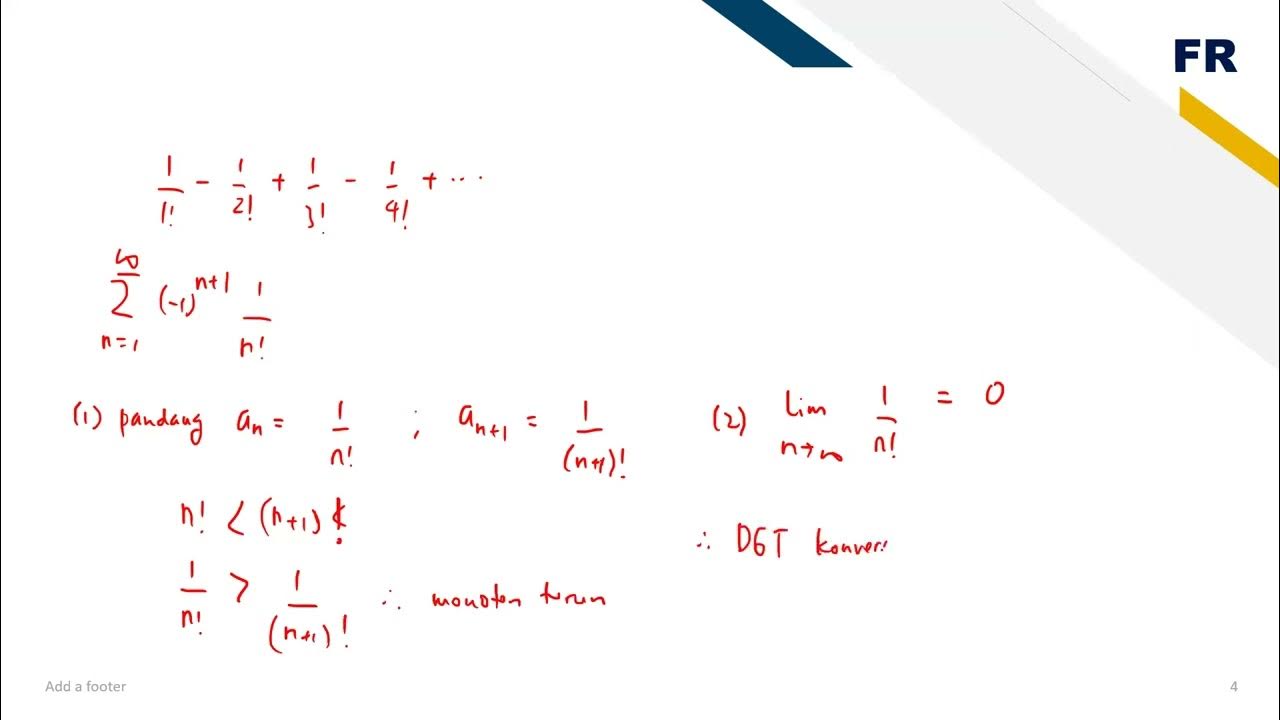U4_L1 | Probability and Related Terms | Mathematics-IV(KAS302/KAS402)| Hindi
Summary
TLDRThe provided script discusses a lecture series on mathematics for a 10th-grade subject, code 302 and black 402. It delves into the concept of trials and events, explaining the importance of understanding the sample space and the outcomes of various types of trials. The lecture covers the properties of events, the difference between dependent and independent events, and the calculation of probabilities. It also explores the concept of 'myuchual exclusive' events, where only one event from a set can occur, and the total number of outcomes in different scenarios.
Takeaways
- 😀 The lecture series is about Mathematics for 10th subject, code 302 and black 402, focusing on MS Word questions and how to classify problems of this type.
- 📝 The discussion begins with the topic of 'trial' and 'events', explaining the concept of an experiment as repeated under the same conditions, using the example of tossing a coin.
- 🔄 The importance of understanding the sample space, which is the set of all possible outcomes for an experiment, is emphasized, using the example of tossing a point to illustrate.
- 🎯 The script delves into the concept of 'trials', explaining that each trial in an experiment is an independent event with a set of possible outcomes, like heads or tails in a coin toss.
- ⚖️ The concept of 'independent events' is introduced, where the outcome of one event does not affect the outcome of another, such as drawing balls from a bag.
- 🔢 The script discusses 'total number of cases' and 'cases', explaining how to calculate probabilities by dividing the number of favorable outcomes by the total number of possible outcomes.
- 🎲 The idea of 'mutually exclusive events' is presented, where two events cannot occur simultaneously, and how this affects the calculation of probabilities.
- 📊 The importance of 'property of events' is highlighted, which refers to the likelihood of an event occurring or not occurring, and how it's calculated.
- 📐 The script touches on the concept of 'dependent events', where the occurrence of one event affects the probability of another, using examples of drawing balls from a bag.
- 📘 The lecture also covers the idea of 'favorable events', which are the outcomes that are desired or beneficial in an experiment, and how to calculate their probability.
- 📚 Finally, the script mentions the importance of understanding various properties of events and how they interrelate in the context of probability and statistics.
Q & A
What is the main topic of the lecture series for the 10th subject, code 302 and black 402?
-The main topic of the lecture series is Mathematics, specifically focusing on the concept of trials and events in probability theory.
What does the term 'trial' mean in the context of this lecture?
-In this context, a 'trial' refers to an experiment that is repeated under the same conditions, such as tossing a coin multiple times.
What is the significance of 'sample space' in the lecture?
-The 'sample space' is the set of all possible outcomes of an experiment. It is important because it helps define the scope of possible results for a given trial or event.
How does the lecture define 'independent events'?
-The lecture does not explicitly define 'independent events,' but in probability theory, they are events where the occurrence of one does not affect the probability of the occurrence of the other.
What is the concept of 'favorable events' discussed in the lecture?
-Favorable events are specific outcomes of an experiment that are desired or have a particular interest to the observer, such as getting heads when tossing a coin.
What is the meaning of 'mutually exclusive events' in the context of the lecture?
-Mutually exclusive events are events that cannot occur at the same time. For example, when rolling a die, getting a 3 and a 6 in the same roll are mutually exclusive events.
How are 'combined events' described in the lecture?
-Combined events are the results of multiple events occurring together. The lecture does not provide a specific definition, but it can be inferred that they are the union of several events.
What is the importance of 'total number of cases' in the lecture?
-The 'total number of cases' is crucial as it represents the total possible outcomes in an experiment, which is essential for calculating probabilities of different events.
What is the concept of 'property of events' mentioned in the lecture?
-The 'property of events' refers to the characteristics or qualities of events that define their behavior in probability, such as whether they are favorable, mutually exclusive, or independent.
How does the lecture discuss the concept of 'probability'?
-While the lecture does not directly define 'probability,' it is implied throughout the discussion of trials, events, and their outcomes. Probability is typically the measure of the likelihood that a given event will occur.
What is the significance of 'experiment' in the lecture?
-An 'experiment' in the lecture refers to any procedure that can be repeated and has a sample space of possible outcomes, which is fundamental to understanding probability.
Outlines

This section is available to paid users only. Please upgrade to access this part.
Upgrade NowMindmap

This section is available to paid users only. Please upgrade to access this part.
Upgrade NowKeywords

This section is available to paid users only. Please upgrade to access this part.
Upgrade NowHighlights

This section is available to paid users only. Please upgrade to access this part.
Upgrade NowTranscripts

This section is available to paid users only. Please upgrade to access this part.
Upgrade NowBrowse More Related Video

Konsep Dasar Baris dan Deret Aritmatika | Matematika Kelas X Fase E Kurikulum Merdeka

Materi Matematika Kelas X Kurikulum Merdeka!! (Semester 2)

Deret Ganti Tanda, Konvergensi Mutlak dan Konvergensi Bersyarat

Persamaan Eksponen Kelas 10 : Bentuk 2 - Matematika Peminatan || Part 2

JENIS JENIS LIMBAH - IPA SMK Kelas X

Introduction to Discrete Mathematics
5.0 / 5 (0 votes)